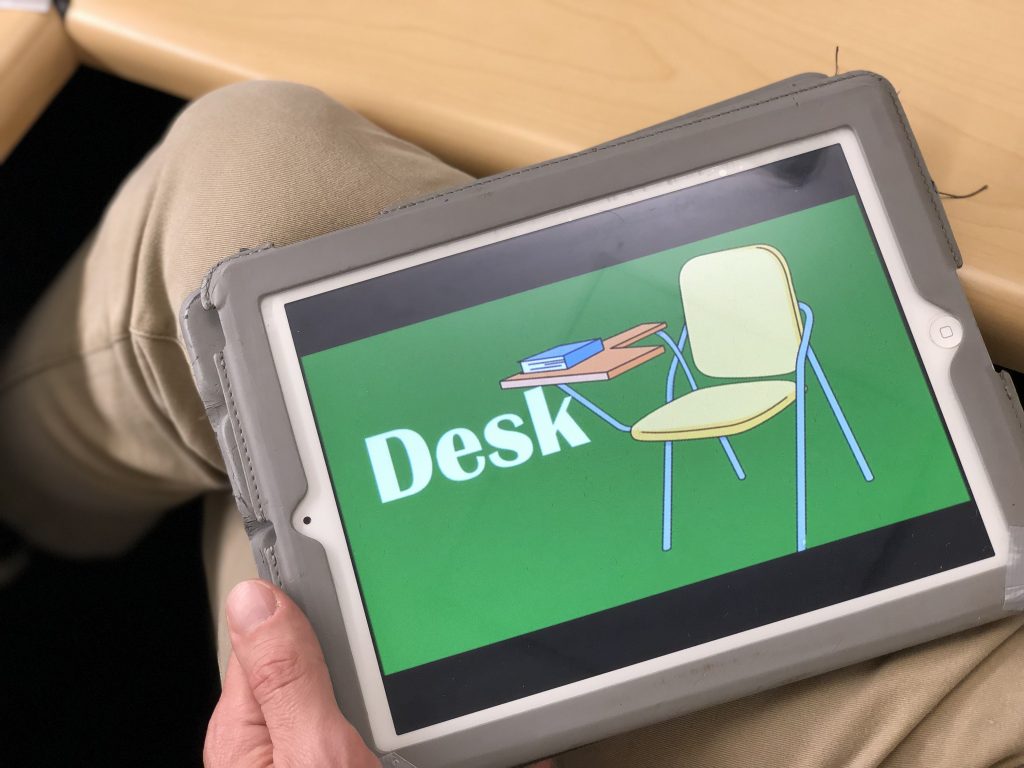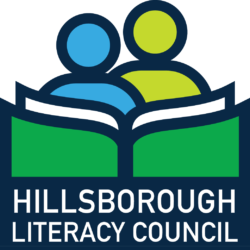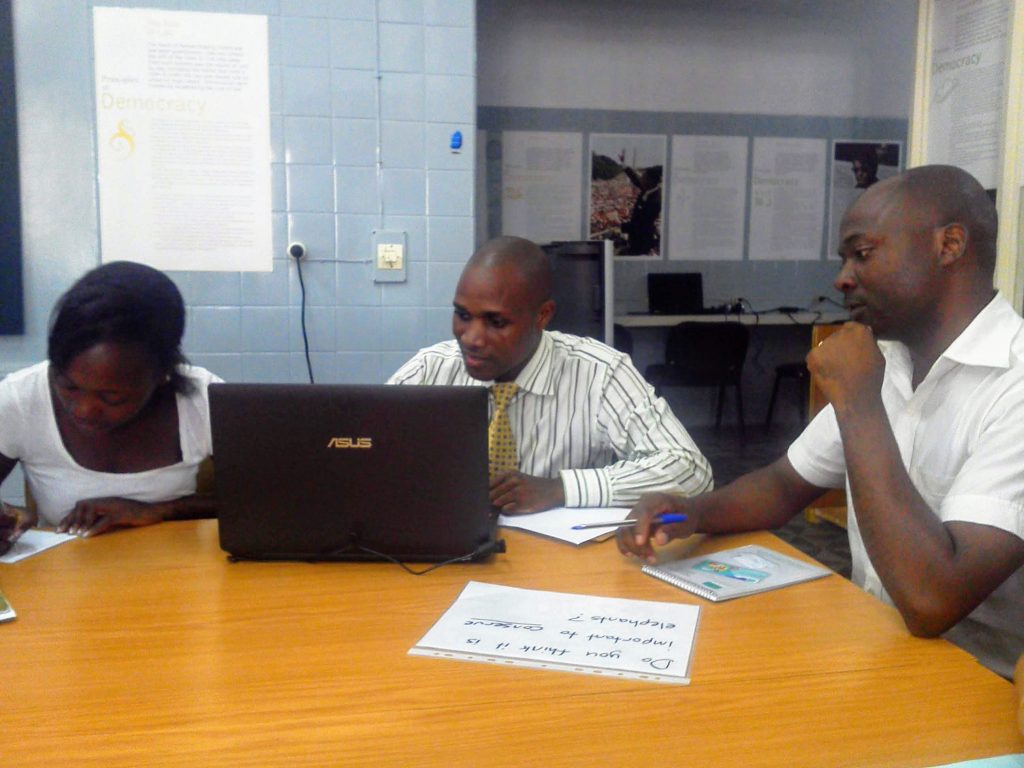I have some good news! The HLC has been awarded an American Dream Grant from the American Library Association and Dollar General Stores. With this grant we plan to purchase tablet computers to use for a series of citizenship classes and for use in our daily HLC tutoring sessions! We are very excited.
With that in mind, I thought I would take this opportunity to think about ways we can use the tablets in our tutoring sessions. They will come pre-loaded with some applications, and I am sure I will talk more about most of them in the future. What I would like to start out talking about is using YouTube in a tutoring session.
There are a variety of ways and reasons for using video in your lesson. The first is that adult learners appreciate and excel with visual learning materials. Video is an excellent, multi-sensory resource that can activate learning in the brain. Many of our students are almost certainly using YouTube to learn many things, so we can use our new tablets to augment those activities.
There are multiple features on the YouTube platform, and many ways to approach a learning situation with YouTube that I would like to discuss. Perhaps some of you have some favorite videos and approaches that you are already using. If so, tell us about them in the comments!

Features:
Closed Captioning
One good use of the videos is to have spoken words, and visual stimulus at the same time. Most ESL students may already know this, but YouTube has closed captioning for each video. In the YouTube App, which works slightly differently than on your computer, you select the menu in the top right corner (three vertical dots). There you will find the option to turn on the Closed Captioning.
One word of warning, the captions are computer generated most of the time, and they can contain various errors. Also, although literacy students can see words as they are being spoken, you’ll probably need to find a video that has words at their level. This can be a challenge.
Finally, you don’t need to use closed captioning all the time. After all, we want people to learn how to hear the words and know what they are, so try watching a video without the captioning, talk about what the learner understood and what they didn’t (ask them comprehension questions), then watch a final time or two with the captions on.
Speed control
Another feature of YouTube is that is has the ability to slow (or speed up) the video. Of course, this is very handy for language learners. The option to change the playback speed is located in the same menu in the top right of the video.
List save
One other option that you may find handy, especially if you look at videos beforehand, is to make a list. To do this, at the top of the video you will see an icon with three lines and a plus sign. Press on this, and you will see a line pop up saying “Saved to Favorites.” There will also be the word “Change” in that pop up. Press “Change” and you will get more options, including to make a new list instead of saving to your favorites. You will have a few options, like “Watch Later,” but you can go ahead and make a list called “Tutoring” if you want, and then save videos there.
Uses:
Lessons
Of course, there are myriad videos about ESL. They will range from lessons about grammar, speech, pronunciation, to going to the store. You can look at videos of language lessons if you want to, but these aren’t really a priority unless you are trying to answer a learner’s specific question about a grammar form, per se.
Pop culture or topic specific videos
Take a look at some of these from time to time to add spice to your tutoring sessions. These will be fun and entertaining for both the student and tutor. You can really watch any video you want so long as you have a technique for incorporating the video content or language input into your session. One of the best ways to do this is to have a pre-discussion session where you talk about some ideas or information you may get from the video based on its title, or an image from the video. You may want to discuss any vocabulary that is important to understanding the video. Then watch the video (numerous times, with closed captioning, slowed down if you want). Afterwards, discuss what you saw. Discuss what was learned from the video. Interpret the video. Just describe the video. You be the judge, based on the level of your learner.
Music
Many learners love music. You can use YouTube to find all kinds of music videos, music games, and karaoke. One popular activity is to make a fill in the blank form for the song where you give the learner some of the words, but leave out keywords that you want them to listen for. Often times, you can find these pre-made on the internet.
Some final Advice
Try to watch videos in advance. You probably want to know what you’re facing before you get into it. Be especially aware of certain music videos, which may be a bit racy or have language you may not appreciate. You be the judge. And, all you have to do is practice the approach of talking before watching, watching, and talking after watching, and you have a lesson!



 Low skill in Health Literacy is believed to be a significant factor that prevents people in the demographic that we serve from accessing healthcare. According to Health.gov, “For many individuals with limited English proficiency (LEP), the inability to communicate in English is the primary barrier to accessing health information and services.” And, limited literacy skills overall are considered to be an indicator that a person is less likely to seek and obtain healthcare.
Low skill in Health Literacy is believed to be a significant factor that prevents people in the demographic that we serve from accessing healthcare. According to Health.gov, “For many individuals with limited English proficiency (LEP), the inability to communicate in English is the primary barrier to accessing health information and services.” And, limited literacy skills overall are considered to be an indicator that a person is less likely to seek and obtain healthcare. First, all of our tutoring books (published by
First, all of our tutoring books (published by  The Literacy Department likes to order books from a series called Oxford Bookworms. These are a line of books known as “hi-lo,” which means, “high interest, low level.” These are great books for literacy and ESL students to practice their reading skills. They come in many different levels of readers, and in both fiction and non-fiction. To find them, you can search the catalog at
The Literacy Department likes to order books from a series called Oxford Bookworms. These are a line of books known as “hi-lo,” which means, “high interest, low level.” These are great books for literacy and ESL students to practice their reading skills. They come in many different levels of readers, and in both fiction and non-fiction. To find them, you can search the catalog at  Like the Oxford Bookworms, this is a hi-lo series. All of the titles are original fiction, and they are also available at different reading levels. They can be found by searching the catalog for “rapid reads.” When the results pop up, do a search again at the top of the screen. This time change the option in the “Search By” field to
Like the Oxford Bookworms, this is a hi-lo series. All of the titles are original fiction, and they are also available at different reading levels. They can be found by searching the catalog for “rapid reads.” When the results pop up, do a search again at the top of the screen. This time change the option in the “Search By” field to Another online resource that I like is managed by the US Department of State. Everything on
Another online resource that I like is managed by the US Department of State. Everything on  provide slow audio and vocabulary in context with definitions at the end.
provide slow audio and vocabulary in context with definitions at the end. and makes you laugh so much you will always remember the word: thus MEMrise. On top of that, the software takes you through several stages of learning, beginning with an introduction to the word and its meaning, then you do a quick multiple choice quiz, eventually moving on to a fill in the blank quiz….each way building your memory. It is nice and repetitive, so you get lots of exposure to your vocabulary. It has a downloadable app that you could use, for example, while waiting in line at the grocery store. Use it!
and makes you laugh so much you will always remember the word: thus MEMrise. On top of that, the software takes you through several stages of learning, beginning with an introduction to the word and its meaning, then you do a quick multiple choice quiz, eventually moving on to a fill in the blank quiz….each way building your memory. It is nice and repetitive, so you get lots of exposure to your vocabulary. It has a downloadable app that you could use, for example, while waiting in line at the grocery store. Use it! Finally, I would be amiss if I didn’t mention Mango Languages, which the library system subscribes to. All users in Hillsborough county should access Mango Languages through our
Finally, I would be amiss if I didn’t mention Mango Languages, which the library system subscribes to. All users in Hillsborough county should access Mango Languages through our 